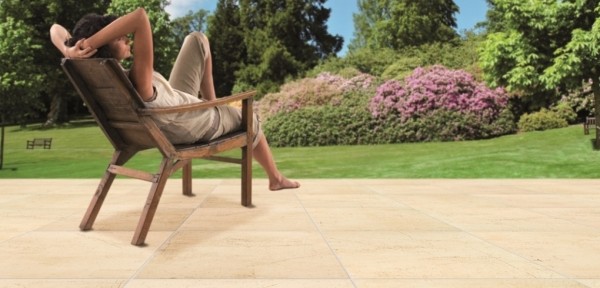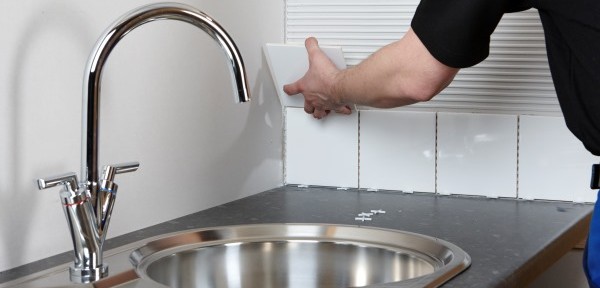Please Login to view this content. (Not a member? Join Today!)




Expansion joints or movement joints are an essential part of any flooring installation and must be installed to prevent tiles or grout from cracking.
A ceramic or stone floor is by its nature a rigid surface –. All tiles expand and contract with changes in temperature, and the larger the tile, the higher the coefficient of expansion.
Because different substrates are affected differently by temperature changes, they can sometimes move at a different rate to the covering. This can then cause tiles and grout to crack if there are no movement joints installed to control the differential movement stresses placed on the tile field.
Current British Standards state that interior floor tiling should be divided into maximum fields of 10 metres in each direction, whilst externally 3 metre intervals are required. Movement joints should always be incorporated over existing structural movement joints and perimeters, door openings, columns, kerbs, steps, and at the junctions of different base materials.
Where the floor is subjected to fluctuations in temperature, it is recommended that joints are placed more frequently in order to help control the movement caused by differences in the coefficient of thermal expansion between different materials as the temperature fluctuates
Stresses from thermal and moisture changes, drying shrinkage, deflection and movement in the substrate affecting the flooring, can cause loss of adhesion resulting in bulging or cracking of the tile – even with deformable or highly deformable tile adhesives normally recommended for tiling onto substrates susceptible to limited movement or thermal changes.
Expansion joints can either be pre-fabricated profiles made of brass, aluminium, stainless steel or PVC or a field applied material such as silicone-type sealant.
There are a number of benefits of using silicone sealants over pre-fabricated profiles for movement joints, most obviously the ease and speed of use.
When sealing movement or expansion joints in floor or wall tiling installations then choosing the right sealant is absolutely essential.
BAL has a number of silicone sealants that are perfect for perimeter sealant movement joints including BAL MICROMAX SEALANT with built-in Microban® antimicrobial protection for walls and floors.
A unique, high performance, ready-to-use silicone sealant, BAL MICROMAX SEALANT is an acetoxy curing sealant which exceeds ISO 11600 and BS 5889 Type B requirements. When installing a natural stone product the use of a neutral curing sealant would be required. Curing in 24 hours, BAL MICROMAX SEALANT can be used on most surfaces including acrylic, ceramic, fibreglass, glass, glazed and painted, in dry or wet conditions, internally or externally.
Correctly used and applied, the bond obtained will be unaffected by weathering, UV radiation and immersion in water.
Thanks to the in-built Microban technology, BAL MICROMAX SEALANT protect floor and wall tiling installations against unsightly mildew and black mould providing added hygiene protection for bathrooms, showers and food consumption areas.
What’s more, BAL MICROMAX SEALANT is available in 10 colours and compliments BAL MICROMAX2 Grout – BAL’s rapid-setting and flexible tile grout for joints from 1mm-20mm. For larger commercial projects, additional colours can be requested.
Also available from BAL is BAL Silicone, a ready to use flexible, silicone rubber sealant which provides firm bonding for sealing movement joints. Available in white, cream, and transparent colours, BAL Silicone is perfect for domestic and light commercial applications such as leisure centres, bathrooms, changing rooms, kitchens and restaurants.
Market-leaders in tiling, BAL deliver innovation products and service solutions and has been trusted for more than 50 years by industry professionals from tile fixers and flooring contractors to architects, and specifiers.
Whatever the tile, background or function of the tiled environment, a BAL solution can be trusted for quality and lasting performance

September sees the launch of the UK’s first dedicated tiling event for many years.
The Tiling Show is to be held at the Harrogate International Centre from 18th to 20th September and will run alongside The Flooring Show, an event which has been running for 52 years and is still seeing year-on-year visitor number increases.
Ian Kershaw, Chairman of The Tile Association, says: “The TTA is delighted to be partnering with the prestigious Harrogate Flooring Show to create the first-ever Tiling Show. After a number of years without a dedicated tiling event for the UK market, we view the launch of The Tiling Show as a very welcome development.
“It will be somewhere that our members and others in the tiling sector can do business, network, learn about the key trends and view product demonstrations. We are committed to playing our part in developing The Tiling Show into a new and unique platform for our industry.”
As well as having a fully-staffed stand at The Show, the TTA will be running a Demonstration Zone, which is likely to become a key attraction for every visitor to the Show. The Zone will host a packed programme of demonstrations running throughout each of the first two days of the Show and until lunchtime on the third day. Presenting companies include BAL and Warmup.
The topics covered will include the cutting of tiles, decoupling mats, large format tiles, expansion joints, wet rooms, mosaics, epoxy grouts and the use of natural stone tiles.
Dave Rowley from BAL will be presenting on:
18th September –
10.30 Introduction and Application of Levelling Compounds (BAL LEVEL MAX) over Heated Cables
15:00 Fixing of Large Format Porcelain Tiles (BAL STONE AND TILE PTB)
19th September –
13:30 Fixing of Ceramic Glass Mosiacs (BAL MAX FLEX FIBRE)
15:00 Grouting Mosiacs (BAL MICROMAX2)
The full programme of seminars in the TTA Demo Zone is to be found on the Show website www.thetilingshow.com
[SOURCE: www.tilezine.co.uk]